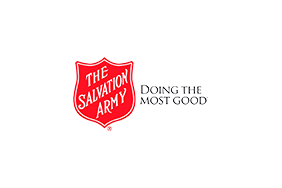Western and Rust Belt States Experiencing Persistently High Levels of Need for Basic Services
Nationally, The Salvation Army’s Human Needs Index shows stability in 2016
Published 05-19-17
Submitted by The Salvation Army
The most recent update of the Human Needs Index (HNI), a joint project between The Salvation Army and the Indiana University Lilly Family School of Philanthropy, reveals that the level of American need in 2016 (1.239) remained fairly stable compared with 2015 (1.245). In the past decade, the HNI reached its highest level in 2012 (1.331). Several states, however, continue to struggle at levels of need that are above the national average.
The first multidimensional measure of human need based on objective data from a nonprofit on the front lines of providing social services, the HNI serves as a powerful tool to track basic human need, with different indicators and less lag time than conventional government data. A standardized index, the HNI includes seven types of services representing basic human needs: meals provided, groceries, clothing, housing, furniture, medical assistance and help with energy bills. The scale of the HNI begins at 0 – the lowest recorded level of need.
“When we look at the broad national picture, we see overall patterns of stability in the national Human Needs Index. National economic indicators, like the poverty rate, SNAP, and WIC, also showed stability from 2015-2016,” said Una Osili, Ph.D., Director of Research for the Lilly Family School of Philanthropy. “Nevertheless, pockets of persistent poverty remain throughout the country. Need is especially prevalent in western and Rust Belt states.”
In 2016, the states with the highest Human Needs Index values were Nevada (4.409), Wyoming (4.026), Pennsylvania (3.234), Alaska (2.195) and Arkansas (2.194).
Regarding changes in need between 2015 and 2016, Wyoming, Minnesota and South Dakota showed the most dramatic increases.
Looking at the past three years of data, Nevada, North Dakota, Pennsylvania, Michigan and Kansas have remained among the 10 states with the highest level of need.
From 2015 to 2016, the data revealed double-digit percentage increases in requests for medical assistance (payments for prescription medicine) in 18 places: Tennessee, Louisiana, Oklahoma, Ohio, Hawaii, Maine, Florida, Mississippi, Maryland, Alaska, Missouri, New Hampshire, Delaware, Nevada, New Jersey, South Dakota, Oregon and Washington, D.C.
“The 43 million Americans still living in poverty must make choices every day – often between basic necessities like medicine or food,” said Lt. Col. Ron Busroe, National Community Relations and Development Secretary for The Salvation Army. “We hope that the ground-level insights revealed in the most recent update of the HNI can assist policymakers and other social services providers to better care for the people who need our help the most.”
About The Salvation Army
The Salvation Army, established in London in 1865, has been supporting those in need in His name without discrimination for more than 130 years in the United States. Approximately 30 million Americans receive assistance from The Salvation Army each year through a range of social services: food for the hungry, relief for disaster victims, assistance for the disabled, outreach to the elderly and ill, clothing and shelter to the homeless, and opportunities for underprivileged children. Eighty-two cents of every dollar donated to The Salvation Army are used to support those services in 5,000 communities nationwide. The Salvation Army tracks the level of need across the country with the Human Needs Index (HumanNeedsIndex.org). For more information, go to salvationarmyusa.org or follow on Twitter @SalvationArmyUS.
About the Lilly Family School of Philanthropy
The Indiana University Lilly Family School of Philanthropy is dedicated to improving philanthropy to improve the world by training and empowering students and professionals to be innovators and leaders who create positive and lasting change. The school offers a comprehensive approach to philanthropy through its academic, research and international programs and through The Fund Raising School, the Lake Institute on Faith & Giving and the Women’s Philanthropy Institute. Follow us on Twitter @IUPhilanthropy and “Like” us on Facebook. For more information, go to philanthropy.iupui.edu.

The Salvation Army
The Salvation Army
The Salvation Army, established in London in 1865, has been supporting those in need in His name without discrimination for more than 135 years in the United States. Approximately 30 million Americans receive assistance from The Salvation Army each year through a range of social services: food for the hungry, relief for disaster victims, assistance for the disabled, outreach to the elderly and ill, clothing and shelter to the homeless, and opportunities for underprivileged children. 82 cents of every dollar donated to The Salvation Army is used to support those services in 5,000 communities nationwide. The Salvation Army tracks the level of need across the country with the Human Needs Index (HumanNeedsIndex.org). For more information, go to salvationarmyusa.org or follow on Twitter @SalvationArmyUS.
More from The Salvation Army

